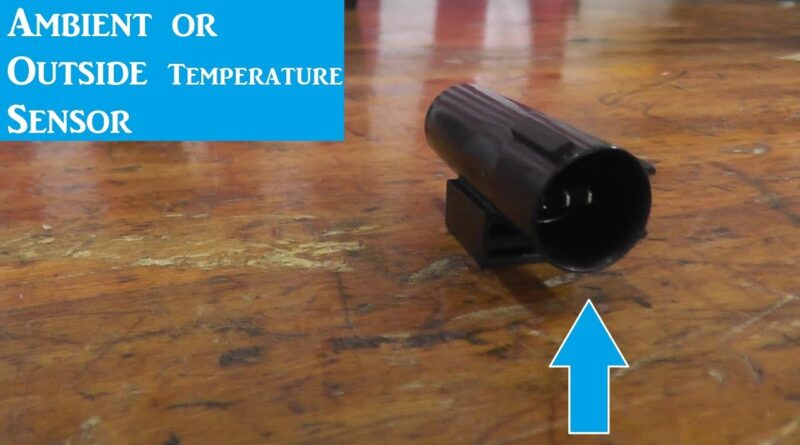Understanding Ambient Temperature Sensors: Importance, Usages and Technology.
An Introduction to Ambient Temperature Sensors
Temperature plays an enormous role in our everyday lives, from clothing choices to home temperature management. But have you ever considered how temperature tracking and management are accomplished? That is where sensor for temperature in ambient can come into play; these sensors play a vital role across fields including home automation, manufacturing processes and environmental conditions monitoring.
Ambient temperature sensors are devices designed to measure air temperatures within an environment. As opposed to measuring specific equipment or food items for temperature detection purposes, ambient sensors monitor an entire room or larger area and offer invaluable data regarding safety, comfort and efficacy.
In this post we’ll look at how ambient temperature sensors function, their different kinds and applications. By the time this article concludes, you should have an improved knowledge and appreciation for these devices – including what they do to keep our industries and homes functioning smoothly.
What Is an Ambient Temperature Sensor?
An ambient temperature sensor measures the ambient air temperature in homes, workplaces, industrial settings and outdoors as well as indoor spaces.
They’re often utilized to track conditions inside these environments – for instance monitoring heating ventilation air conditioning (HVAC) systems as well as machines in industrial settings operating safely while monitoring weather events and forecasts. The information gleaned by such sensors can then be utilized in numerous ways – like controlling HVAC units; verifying safety compliance by industrial settings as well as weather changes by simply monitoring events as compared with previous occasions and forecasting future forecasting opportunities or forecasting weather events in real time.
Sensors are made up of various materials and techniques which alter their properties as the temperature rises, such as thermocouples or thermistors, for measuring ambient temperatures.
How Do Ambient Temperature Sensors Operate?
Ambient temperature sensors work by sensing and translating ambient temperatures to an easily understandable format, using materials which respond quickly to changes in temperature. Here’s an example:
Thermistors (Thermistor) are resistors that change resistance with temperature changes, providing information to sensors which monitor them to calculate temperatures accurately and quickly. Due to their quick response and precision capabilities, thermosistors have gained widespread use as reliable temperature measuring instruments.
Thermocouples consist of two dissimilar metals joined at their points of intersection, connected by wire. When exposed to heat, their junction produces an electric voltage that can be tracked. This voltage directly correlates with temperature at their junction point.
Once a sensor can detect temperature, that information will be relayed to a monitoring system and used to modify climate accordingly, for example by switching on air conditioners or turning up heating elements in factories or homes.
Types of Ambient Temperature Sensors There are various kinds of ambient temperature sensors designed for specific uses. Here are a few popular varieties:
Room Temperature Sensors Sensors are commonly utilized to assess temperature in offices, homes and various indoor settings such as museums. As part of an intelligent thermostat system, sensors help people enjoy comfortable environments while saving energy at the same time.
Wireless temperature sensors offer an alternative to wired sensors by employing radiofrequency (RF) signals to transmit information regarding temperature. Ideal for remote or hard to access locations where running wires would prove problematic, these wireless temperature sensors offer information without complications of wiring wires into place.
Temperature Sensors for Industry Applications were specifically created for industries where precise temperature regulation is vitally important, including monitoring environments and equipment temperatures in order to guarantee safe operations and ensure their safe deployment. Temperature sensors designed specifically for use within industries are utilized by these environments for efficient monitoring purposes and as safety checks during operations.
Sensors for Temperature and Humidity The sensors utilized for measuring both humidity and temperature conditions within an environment, typically used to maintain product quality in greenhouses, warehouses or museums where both must be kept under close observation to ensure products last as promised.
Outdoor Temperature Sensors: Outdoor temperature sensors are built to withstand severe climate conditions and used by weather stations, HVAC systems and intelligent homes to track outdoor temperatures.
Ambient Temperature Sensor Applications
Ambient temperature sensors have multiple applications across many fields in order to ensure both system functionality and environmental wellbeing. Here we take a look at all of their uses across sectors and applications.
1. Home Temperature Control
The primary application for thermostats that measure and manage temperature in homes involves intelligent technologies for home usage. These smart thermostats use sensors that measure indoor temperatures in real time before making adjustments accordingly – for instance lowering it when no one is present and then raising it when family returns home to ensure maximum comfort within your own space.
Smart home appliances that utilize sensors for temperature will not only bring peace of mind but will also boost energy efficiency by being able to adjust temperatures according to your daily activities, helping reduce consumption and cut electricity costs.
2. Industrial Applications
In workplace environments, ambient temperature sensors play an essential part in protecting equipment and workers. Temperature sensors designed for industrial use monitor equipment to make sure it doesn’t get too hot; otherwise it could result in machine breakdown or safety concerns. Engines, motors and transformers produce heat; when temperatures get too high this could damage or lead to fires on site.
Firms integrating temperature sensors in industrial machines can implement automatic cooling processes or stop machines when they become too hot, helping prevent incidents and increasing employee safety.
3. Environmental Monitoring
Sensors that measure ambient temperature are key tools in environmental monitoring. Environmental scientists and meteorologists often rely on outdoor temperature sensors for environmental study purposes; environmental scientists use outdoor temperature sensors in particular for tracking changes in natural habitats like forests or lakes as well as ocean temperatures; this data allows scientists to study climate shifts as well as observe wildlife habitats while forecasting weather patterns with ease.
Sensors such as these can also be utilized as outdoor thermometers that monitor farming fields to provide farmers with valuable insights regarding optimal planting and harvesting times for their crops.
4. Healthcare Settings
In clinics and hospitals, temperature is of vital importance in order to keep medicines and vaccines effective and functioning at peak performance. Temperature sensors help track storage areas so as to make sure these items remain within an ideal temperature range for storage purposes.
Hospitals may use ambient temperature sensors in both their operating rooms and patient care areas to create optimal conditions for surgical procedures and patient recovery.
Utilizing ambient temperature sensors has many advantages, including:
Efficient Energy Use When installed into cooling and heating systems, temperature sensors enable businesses and households alike to maximize energy usage efficiency and use only what power is necessary – leading to significant cost reduction over time.
Improved Comfort: Ambient temperature sensors can assist in keeping rooms at an ideal temperature in both your home and workplace, by choosing their desired temperature that automatically adapts throughout the day using intelligent thermostats. By setting them, users have more control than ever over maintaining comfort at their desired levels!
Safety sensors in industrial settings can assist in the prevention of excessive heat in equipment and machinery, activating cooling systems or shutting down equipment if temperatures surpass safe limits, thus helping avoid potential dangers that might otherwise exist.
Data Analysis and Collection: Ambient temperature sensors offer invaluable information that is used to monitor trends, spot problems early and enhance system performance. Companies as well as homeowners alike can utilize this data for informed decisions regarding energy consumption as well as environmental controls.
Selecting an Ambient Temperature Sensor
Determining which ambient temperature sensors best meet your individual requirements depends on several key considerations. Some key things you should keep in mind while selecting one:
Accuracy While certain sensors possess greater accuracy than others, industrial use may necessitate more precise sensors in order to inspect equipment while home use might not need as much precision.
Environment Be mindful of where your sensor will be used; if intended for outdoor use, an outdoors temperature gauge specifically made to withstand conditions like wind, rain and extreme high temperatures is recommended.
Wireless and Wired Temperature Sensors: Wireless temperature sensors may be useful in remote or dangerous areas where wired sensors cannot reach; however, wired sensors might offer more reliability and be safer environments than wireless alternatives.
Temperature Range Sensors with different temperature ranges come with their own specific sets of limitations; when working in tough conditions it’s essential to have sensors which are suitable for monitoring an extensive array of temperatures. When selecting one it should have enough data storage capacity.
Conclusion: Ambient Temperature Sensors With advances in technology, sensors for ambient temperature are expected to advance further. From smart homes and industrial settings, sensors for ambient temperature are becoming ever more precise, efficient and flexible – offering real-time information which improves safety as well as energy efficiency for improved safety measures and greater energy savings. As smart homes continue their adoption of smart sensors for ambient temperature, more complex temperature monitoring solutions should emerge over time that offer real-time information to enhance safety and improve energy efficiency – something the future will likely include as more sophisticated sensors which provide real time data on safety measures while improving energy savings from increased use.
No matter your household comfort needs or workplace processes, ambient temperature sensors are an indispensable asset that play an essential part in shaping our society for tomorrow.
Visit this site for more details on the benefits that sensors for temperature in ambient areas will bring your business or home.



